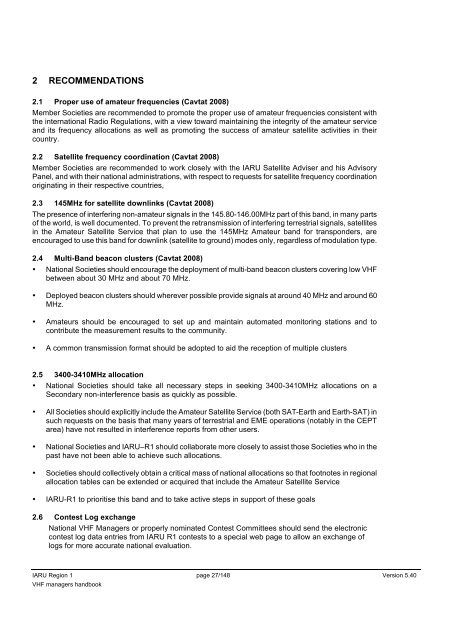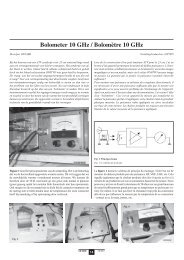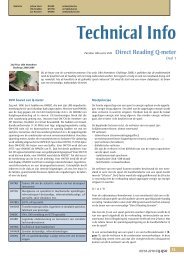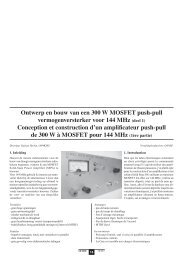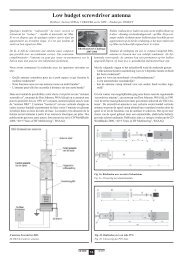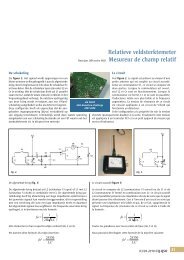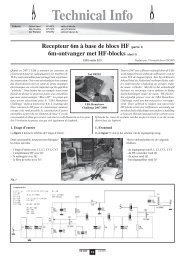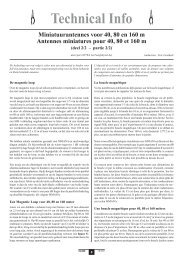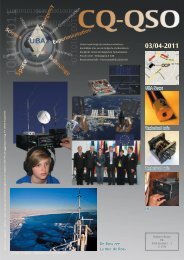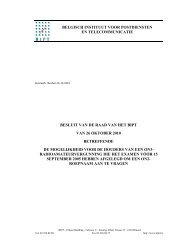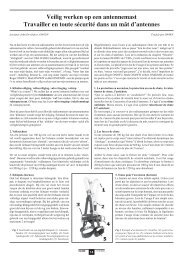IARU Region 1 VHF Managers Handbook - UBA
IARU Region 1 VHF Managers Handbook - UBA
IARU Region 1 VHF Managers Handbook - UBA
You also want an ePaper? Increase the reach of your titles
YUMPU automatically turns print PDFs into web optimized ePapers that Google loves.
2 RECOMMENDATIONS<br />
2.1 Proper use of amateur frequencies (Cavtat 2008)<br />
Member Societies are recommended to promote the proper use of amateur frequencies consistent with<br />
the international Radio Regulations, with a view toward maintaining the integrity of the amateur service<br />
and its frequency allocations as well as promoting the success of amateur satellite activities in their<br />
country.<br />
2.2 Satellite frequency coordination (Cavtat 2008)<br />
Member Societies are recommended to work closely with the <strong>IARU</strong> Satellite Adviser and his Advisory<br />
Panel, and with their national administrations, with respect to requests for satellite frequency coordination<br />
originating in their respective countries,<br />
2.3 145MHz for satellite downlinks (Cavtat 2008)<br />
The presence of interfering non-amateur signals in the 145.80-146.00MHz part of this band, in many parts<br />
of the world, is well documented. To prevent the retransmission of interfering terrestrial signals, satellites<br />
in the Amateur Satellite Service that plan to use the 145MHz Amateur band for transponders, are<br />
encouraged to use this band for downlink (satellite to ground) modes only, regardless of modulation type.<br />
2.4 Multi-Band beacon clusters (Cavtat 2008)<br />
• National Societies should encourage the deployment of multi-band beacon clusters covering low <strong>VHF</strong><br />
between about 30 MHz and about 70 MHz.<br />
• Deployed beacon clusters should wherever possible provide signals at around 40 MHz and around 60<br />
MHz.<br />
• Amateurs should be encouraged to set up and maintain automated monitoring stations and to<br />
contribute the measurement results to the community.<br />
• A common transmission format should be adopted to aid the reception of multiple clusters<br />
2.5 3400-3410MHz allocation<br />
• National Societies should take all necessary steps in seeking 3400-3410MHz allocations on a<br />
Secondary non-interference basis as quickly as possible.<br />
• All Societies should explicitly include the Amateur Satellite Service (both SAT-Earth and Earth-SAT) in<br />
such requests on the basis that many years of terrestrial and EME operations (notably in the CEPT<br />
area) have not resulted in interference reports from other users.<br />
• National Societies and <strong>IARU</strong>–R1 should collaborate more closely to assist those Societies who in the<br />
past have not been able to achieve such allocations.<br />
• Societies should collectively obtain a critical mass of national allocations so that footnotes in regional<br />
allocation tables can be extended or acquired that include the Amateur Satellite Service<br />
• <strong>IARU</strong>-R1 to prioritise this band and to take active steps in support of these goals<br />
2.6 Contest Log exchange<br />
National <strong>VHF</strong> <strong>Managers</strong> or properly nominated Contest Committees should send the electronic<br />
contest log data entries from <strong>IARU</strong> R1 contests to a special web page to allow an exchange of<br />
logs for more accurate national evaluation.<br />
<strong>IARU</strong> <strong>Region</strong> 1 page 27/148 Version 5.40<br />
<strong>VHF</strong> managers handbook


